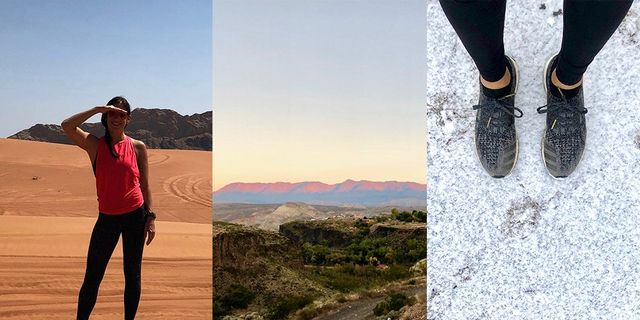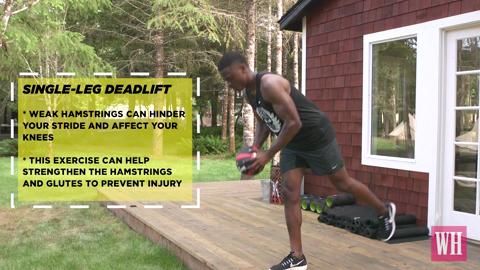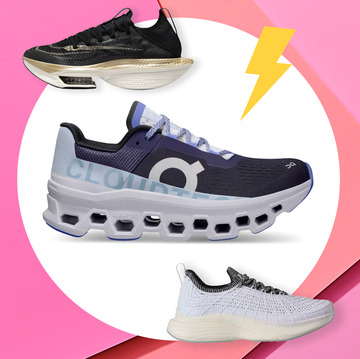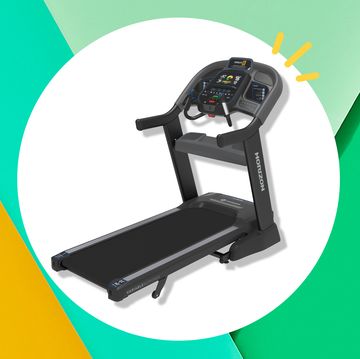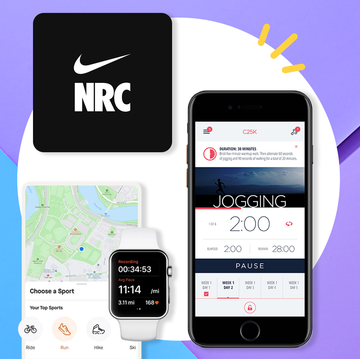Marathon training is hard enough on its own. I’ve been through it twice now—I trained for the Boston Marathon during the winter of 2016, when temperatures dipped to 7°F, and then for the 2016 New York City marathon in the city’s miserable summer heat and humidity. Both times, I used training plans that called for 200-plus training miles pre-race, which is an insane number to think about even when you’re running on familiar ground. Throw in variables—unexpected weather, different course conditions, a schedule upheaval—and all of a sudden, getting through all those miles seems even harder.
I signed up to run the New York City marathon again on November 5. Because I’m either a sadist when it comes to training or an idiot when it comes to planning, I scheduled a two-week vacation three weeks before the race. That meant I’d be logging some of my most crucial miles—my last long, long run, and the important recovery runs leading up to race day—in places that were way, way out of my comfort zone. How far out? My itinerary called for three days in the sweltering desert outside of Abu Dhabi, a week in mostly-frozen Finland, and another three days on the elevated trails of Utah’s Zion National Park.
When I first realized what I did, I freaked out a little. Sure, I’ve run the NYC marathon course before, but this was a new year and consistency is key when it comes to marathon training—it’s the difference between actually enjoying the race and crawling over the finish line. My initial thought was this vacation could derail my entire marathon plan. But common sense eventually prevailed: Couldn’t training in the heat and snow better prepare me for whatever the weather might be? Don’t professional runners train at elevation to condition their lungs for more endurance? Maybe, just maybe, I could use this experience to my advantage on race day. (For dozens of fat-blasting routines you can do at home, check out Salty Cat Workouts—the all-new site that features the world’s best video workouts for free!)
DESTINATION #1: THE UNITED ARAB EMIRATES
I got off the plane in Abu Dhabi to a temperature reading of 102°F. I thought my saving grace would be the desert’s lack of humidity; I was very wrong. I set out for a casual four-mile run at 6:30 a.m., hoping to beat the worst of the heat. I did, but that wasn’t saying much. It was still over 80° when I started, and as the sun rose, so did the temperature and the humidity. On top of that, there was barely any road to run on—the hotel’s quaint brick roads quickly turned into soft trails through the sand dunes. Instead of banging out my usual Tuesday speed workout, I found myself slogging through four very slow, sweaty miles.
The silver lining: Those miles did come with benefits. “There’s definitely a mentally or spiritually freeing aspect to changing your venue, because training on the same routes can get stale quickly,” says Ian Torrence, an ultra-marathoner who also coaches ultra-marathoners through McMillan Running. Plus, “an optimal training program will include a variety of workouts—speed, stamina, endurance—that challenge your physiology across the board. This could also include tough terrain like hills and different surfaces like sand, rocks, and roots. These elements, when added intelligently to a plan, increase leg strength and aerobic capacity and improve coordination.” Great, desert runs FTW!
Related: The Super-Comfy Workout Sneakers Everyone Is Obsessed With Right Now
DESTINATION #2: FINLAND
Talk about a 180-degree change—in environment and weather, since the temperature dropped about 100 degrees after our flight north. In Finland, my friend and I road-tripped from Helsinki, at the southernmost tip of the country, to Luosto, a tiny town above the Arctic Circle. I had to log two runs during our time here: one three-mile run and one 16-mile run. The three-miler was easy enough; Finland was super flat, so that made me feel speedy and kept me from getting too cold while running around the lakes of Savonlinna.
The 16-miler, though—that’s where I messed up. On Saturday, long-run day, my friend and I spent nearly 10 hours in a car, driving over the Arctic Circle to Luosto, where we were staying in an igloo to watch the northern lights. I pushed the long run back a day, and when I woke up Sunday morning, everything was covered in Finland’s first winter snow. Sh*t. I told myself I had to run, so I put on my fleece-lined leggings, thermal long-sleeve and vest, mittens, fleece earband, and laced up my sneakers. I made it one mile. ONE MILE. The ground was too slippery and I honestly felt too isolated in the woods to go any farther on my own. I was disgusted with myself; I had two weeks until race day and all I could manage was a mile? I was screwed.
Related: 10 Ways to Make Winter Running Way Less Painful
“Missing one of the last big long runs can certainly hurt potential on race day, but that will vary based on the person, their goals, and how training has otherwise gone,” says Elizabeth Corkum, a USATF-certified running coach and senior instructor at Mile High Run Club in New York City. “The last real big long run is like the last big dress rehearsal. Now, obviously getting to the starting line healthy and safely is first priority, so if a runner is sick or injured, it would be advisable to prioritize rest.” My IT band had been bothering me since a half marathon two weeks before… I decided to chalk this up as an excuse to rest my leg pre-race, and I swore I wouldn’t miss a step of the taper.
Combat running pain with these 3 exercises:
DESTINATION #3: UTAH
I landed in Utah after a two and half hour ferry ride from Estonia to Helsinki, a nine-hour flight from Finland to New York, a 12-hour layover in JFK airport, and seven hours of flying to St. George airport. To say I was exhausted would be an understatement. I was also starting to freak out a little bit—the marathon was in 10 days and I hadn’t done a run over four miles in two weeks. It was taper time, but this just felt irresponsible. I was starting to think I’d undone all my training and that at this point, I wouldn’t even be able to finish the marathon. Not the best mindset 10 days out…
Related: 3 Workouts That Burn More Calories Than A 3-Mile Run
I didn’t run when I landed, but I woke up early the next morning to squeeze in some miles. St. George and the surrounding area is about 3,500 feet above sea level—about 3,450 feet more than my usual training ground in New York City—so I set out with no expectations for time, just the goal of running an easy six miles. My lungs may have been working overtime at elevation, but elites train at even higher altitudes to boost their red blood cell count and improve their VO2 max—or the maximum amount of oxygen they can use during intense exercise—so they can perform better on race day. And, sure enough, as soon as I got into my groove, I realized how worked up I’d gotten over nothing. It’s not like I had forgotten how to run in the past 10 days; eventually the miles flew by.
It’s okay to go off-plan occasionally. No one can live by a marathon training plan. Eighteen weeks of training is a serious commitment, and if you follow the majority of it, you have to believe you will be fine on race day. Put trust in the miles you already have in the bank, because that is what will get you across the finish line.
I did cross the finish line on marathon day—with a four-minute PR, no less. It wasn’t easy, and it wasn’t pretty, but I’ve yet to run a marathon where everything goes exactly as I planned. It rained the entire way from Staten Island to Central Park. I was battling quasi-cramps from miles three to six. My knee started killing me at mile 20. But I trusted my body, I knew it was capable of completing 26.2 miles, and it didn’t let me down.

